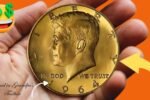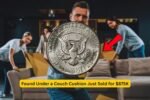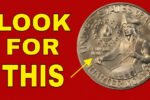War-Era Jefferson Nickel : In the annals of American coinage, few pieces have undergone a transformation as dramatic and surprising as the Jefferson nickel minted during World War II. While most nickels are barely worth more than face value, one war-era variety has captured the fascination of collectors and historians alike — not for its beauty or age, but for the compelling story behind its rarity and value.
The Wartime Shift: A Nickel’s Unexpected Composition
The Jefferson nickel, first introduced in 1938, underwent a significant change between 1942 and 1945. During World War II, nickel — a key metal used in armor plating — became a critical wartime resource. To conserve this strategic material, the U.S. Mint altered the composition of the five-cent coin.
Instead of the usual 75% copper and 25% nickel alloy, the Mint introduced a wartime alloy consisting of 56% copper, 35% silver, and 9% manganese. These “silver nickels” are instantly recognizable to numismatists by the large mint mark placed above Monticello on the reverse — a unique feature found only on these war-era coins.
The 1943/2-P Nickel: A Minting Mistake Becomes a Treasure
Among the silver nickels, one stands out as especially valuable: the 1943/2-P Jefferson nickel. This coin features a prominent overdate error — the “3” in the date was struck over a “2.” This happened when a 1942 die was repurposed and re-engraved with a 1943 date, resulting in a visible overlap.
Such overdate errors are rare, especially in modern U.S. coinage, where quality control is typically stringent. But during the frenzied production efforts of the war, such anomalies occasionally slipped through. Today, the 1943/2-P nickel is considered one of the most famous and valuable Jefferson nickels, fetching hundreds or even thousands of dollars in high grades.
Why It’s So Valuable
Several factors contribute to the 1943/2-P nickel’s high value:
Rarity – Few were produced, and even fewer survive in pristine condition.
Historical Context – The coin’s link to World War II and resource rationing adds a layer of historical appeal.
Error Appeal – Collectors often prize error coins due to their uniqueness and the insight they offer into the minting process.
Silver Content – Unlike other nickels, the wartime coins contain real silver, giving them intrinsic value as bullion.
The Modern Market
As of 2025, certified high-grade examples of the 1943/2-P nickel can sell for $1,000 or more. Even circulated examples, if the overdate is clearly visible, can command significant premiums over face value. Collectors seek out these coins at shows, auctions, and online platforms, often as a centerpiece of a Jefferson nickel collection.
A Legacy Coin
The 1943/2-P Jefferson nickel reminds us that value in numismatics isn’t always about age or denomination. Sometimes, it’s the story — of wartime sacrifice, of human error, of changing materials — that transforms a humble five-cent coin into a treasure worth many times its original worth. For collectors, this coin is more than metal: it’s a snapshot of American history, frozen in silver and stamped with unintended uniqueness.
Frequently Asked Questions (FAQs….)
Q1. What is the Lincoln Penny?
The Lincoln Penny, also called the Lincoln Cent, is a U.S. one-cent coin first minted in 1909. It features President Abraham Lincoln on the front and various reverse designs over the years, including wheat ears (1909–1958), the Lincoln Memorial (1959–2008), and the Union Shield (2010–present).
Q2. What’s the story behind the penny found behind a wall clock?
A rare Lincoln penny was reportedly discovered hidden behind a vintage wall clock during cleaning or renovation. The coin turned out to be an extremely rare or valuable variant, which instantly caught the attention of coin collectors and sparked excitement in the numismatic community.




